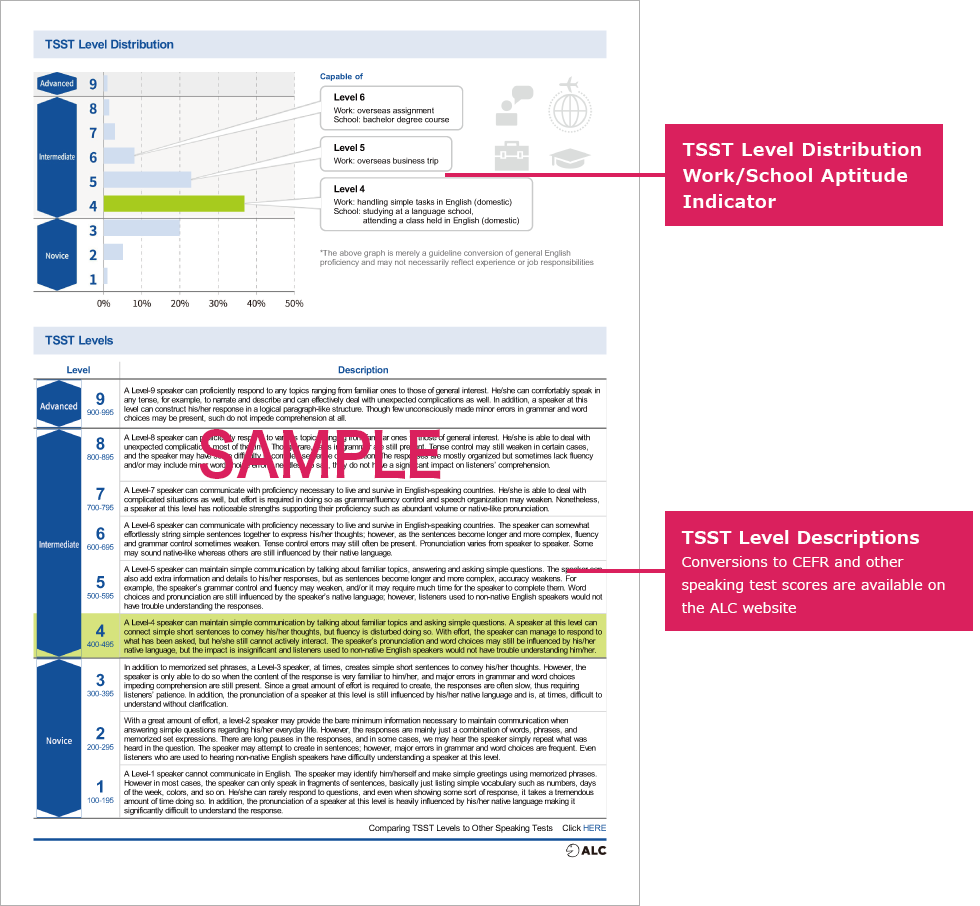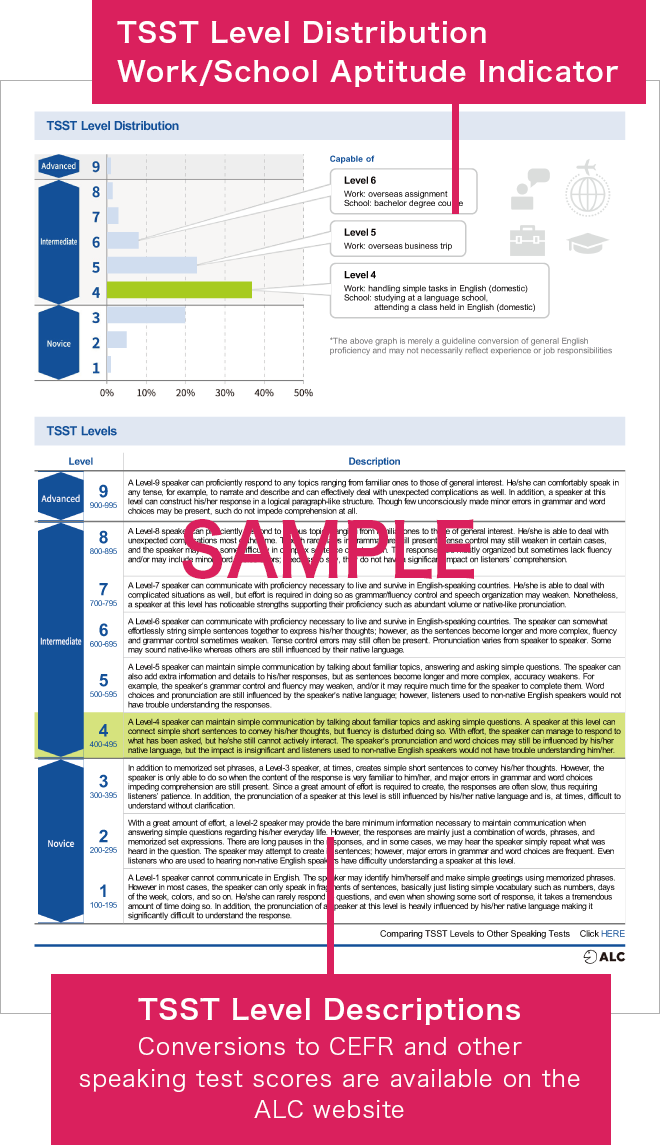Score Report
The test taker’s current level and what it takes to improve are viewable. The report is downloadable in Japanese and English.
Simply taking the test isn’t the ultimate goal. It is important to evaluate results so that you can keep improving. Learn to know individual strengths and weaknesses by reading the comments and advice in the Test Results.
Page 1Overall Evaluation
A color-coded radar chart shows 1) the test taker’s TSST level; 2) what it indicates; 3)strengths and weaknesses in different aspects of speaking.
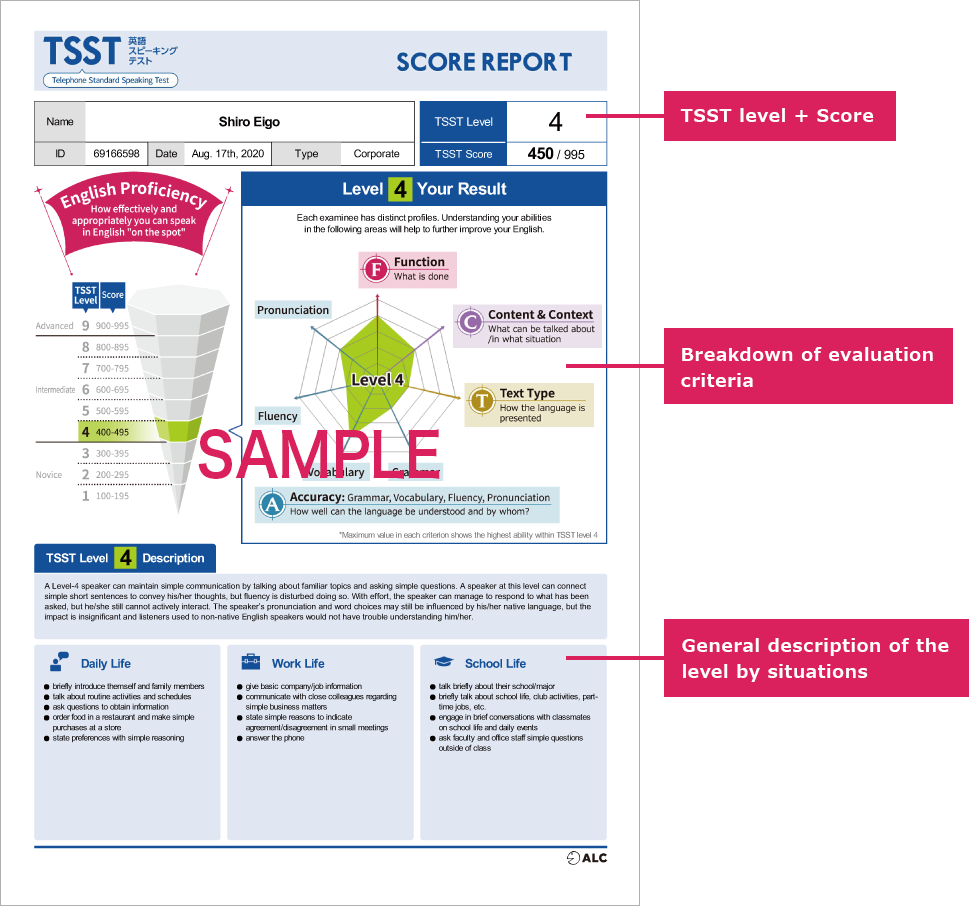
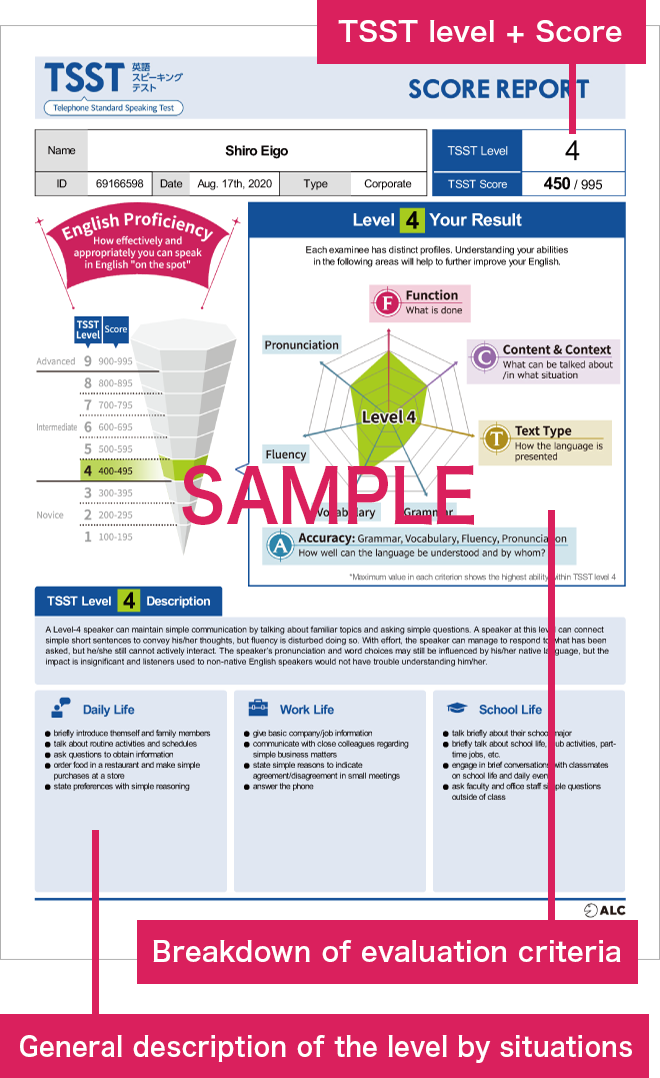
Page 2Breakdown of abilities
A breakdown analysis of speech patterns unique to each speaker helps identify the speaker’s strengths, areas for improvement, and how improvements can be made.
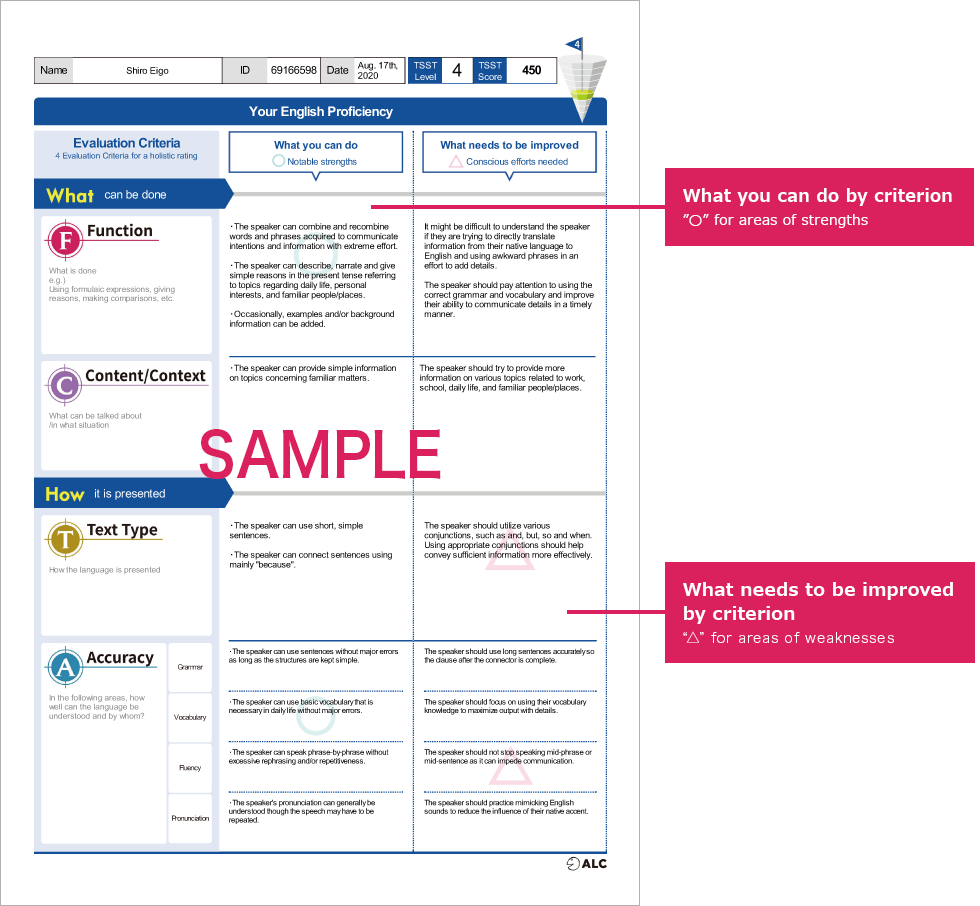
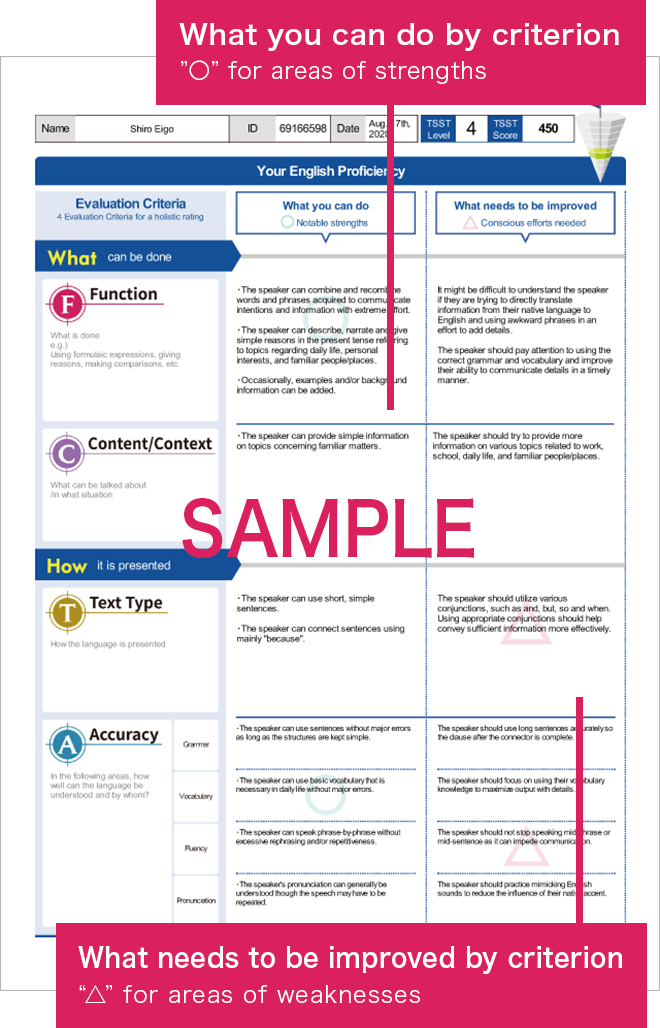
Page 3Study tips and action planning
This page shows the examinee effective study tips based on the individual speech patterns and helps to make plans to get to the next level.
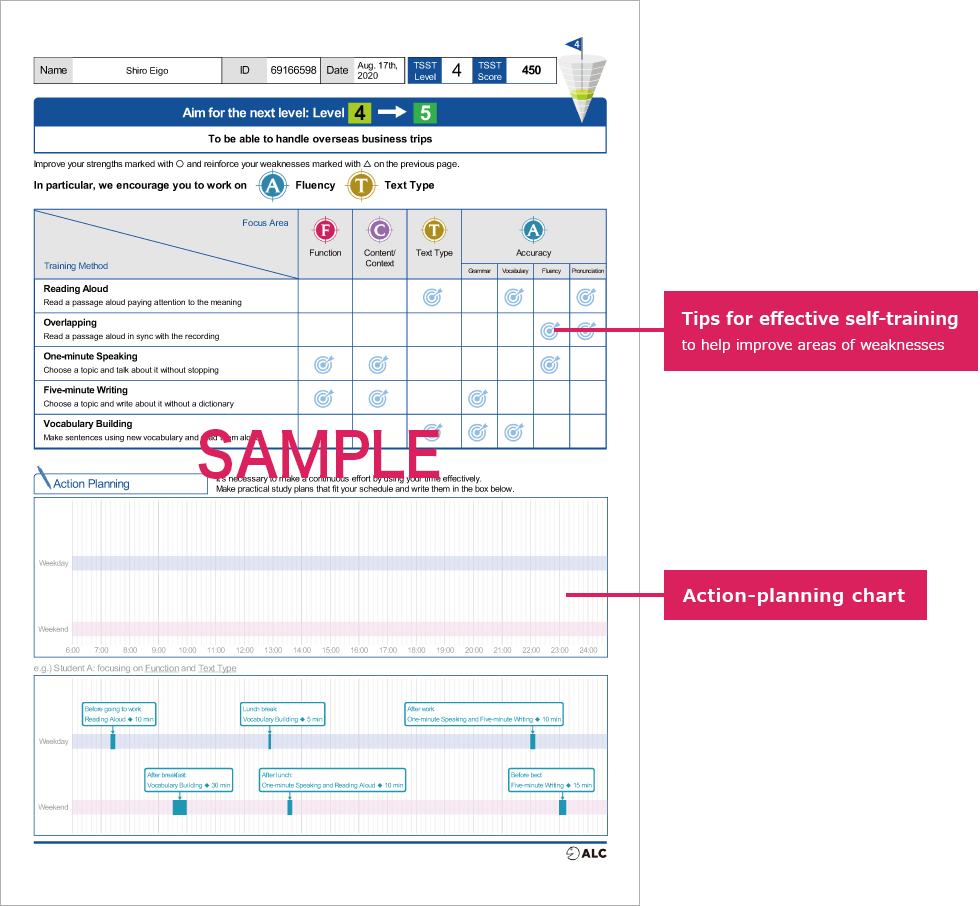
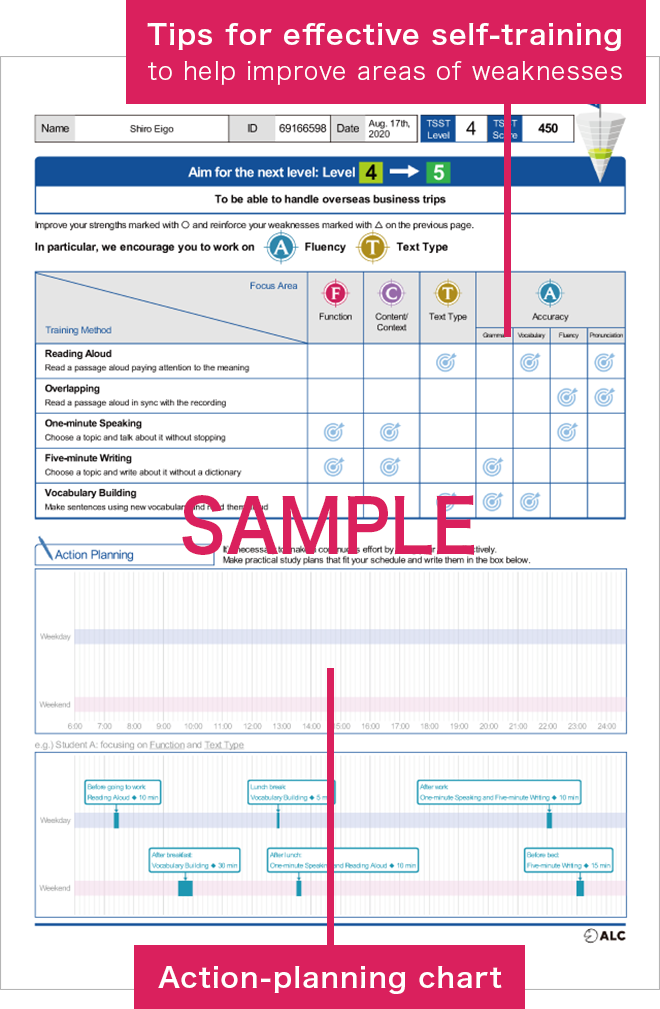
Page 4Reference
This page shows the overall level distribution to indicate the examinee’s position in the distribution chart and to help goal-setting.
